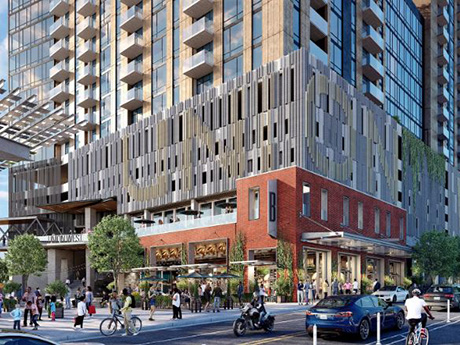Raleigh-Durham’s multifamily market has solidified itself as a top performer in recent years. After a rapid economic recovery in 2021 and early 2022, occupancy rates and rent growth soared.
Year-over-year effective rent growth reached 13 percent in third-quarter 2022, well above the national average, and totaled 15 percent in Class A product. The region continues to be nationally ranked for real estate prospects, competitive incentives and taxes, education and quality of life.
The impressive list of job wins the Triangle has been awarded continues to grow, including major job announcements from Wolfspeed, Apple and VinFast, to name a few. The region’s status as one of the nation’s leading tech and life science hubs has also lured giants such as Grifols, Pfizer, IBM and Red Hat.
Population growth is one of the Triangle’s strongest apartment market fundamentals and it continues to surge, as approximately 5,000 new residents move to the region each month. Raleigh and the surrounding metropolitan areas are expected to increase in population at the second-fastest rate in the country, behind only Austin.
Municipalities outside of the Triangle’s metro areas are also some of the fastest-growing locations in the state. Johnston and Franklin counties, for example, are expected to grow by more than 30 percent this decade.
Strong rent growth
Following the 2020 downturn, the Raleigh-Durham market rebounded and hit historical highs, with annual rent growth reaching levels above 21 percent in first-quarter 2022. Like many markets across the country, fundamentals began to moderate in the third quarter. Operators initiated rent cuts beginning in September 2022, following nearly two years of record growth.
While seasonal rent reductions were typical prior to COVID-19, the Triangle’s latest decline is likely a result of decreasing occupancy and declining new lease demand. After a historic wave of household formations and relocations in 2021, renters chose to mostly stay put in 2022 due to low consumer confidence and high inflation.
The preference to renew in favor of leasing new units was evident in the Triangle market, where 56.7 percent of renters in the Raleigh-Durham market opted to renew their lease in the third quarter.
New construction
Multifamily development activity has increased almost everywhere nationwide, yet North Carolina is one of five states among Texas, Florida, California and New York with the largest number of apartments under construction.
One of downtown Raleigh’s largest development projects, Union West, will be a 32-story tower and a key component in the city’s improved transportation infrastructure. The project will incorporate a new regional bus station, 560 apartment units, a hotel and retail space with an estimated delivery in 2025. Approximately 10 percent of the multifamily in Union West will be designated affordable housing for households making 80 percent of the area’s median income.
Rezoning requests were abundant in 2022, as Raleigh’s City Council reviewed numerous 40-story applications in areas including downtown Raleigh, south Raleigh and North Hills. In 2019, there was a concentrated push by developers to rezone, as multiple projects were approved for up to 40 stories, which would allow for more density and attempt to address the lack of housing options necessary to meet demand and ensure affordable availability.
Development in the Triangle is expected to slow this year, as the market anticipates permitting to moderate, and construction delays could persist. Inflation concerns have certainly begun to slow construction, with the cost of capital still rising.
Capital markets
After benefiting from historically low rates for an extensive period, Raleigh-Durham will continue to adjust to higher interest rates in 2023. Though third-quarter 2022 sales volumes were below the market peak of $2.6 billion from fourth-quarter 2021, sales volume has remained solid for the past two years.
Trailing 12-month sales volume in Raleigh-Durham totaled $6.7 billion at the close of third-quarter 2022. The average price per unit also remained high, at $252,711 in the third quarter, registering above $200,000 for six consecutive quarters. Average cap rates for third-quarter transactions remained at historic lows, averaging 3.8 percent, down 80 basis points year-over-year.
The expectation is for investors to wait for market conditions to normalize before making new allocations. Meanwhile investors and owners alike will need to compromise on pricing for market sales activity to increase.
Going into 2023, opportunity to acquire new multifamily developments, especially those that are in early stages of lease-up, will allow investors to capitalize on buying opportunities for top-tier product.
Outlook
The long-term outlook advocates for continued success in the Raleigh-Durham market, while near-term performance will likely be impacted by how well the market can absorb elevated levels of supply in the upcoming year.
New supply levels are expected to elevate rent and occupancy moderation, particularly for Class A product. The jury is still out on whether activity will return in the spring when the leasing season typically escalates.
— By Emily Bostic, Transaction Manager; Steven Peden, Principal; and Kyle Gonzalez, Vice President of Avison Young’s Carolinas Multifamily Team. This article was originally published in the January 2023 issue of Southeast Real Estate Business.





